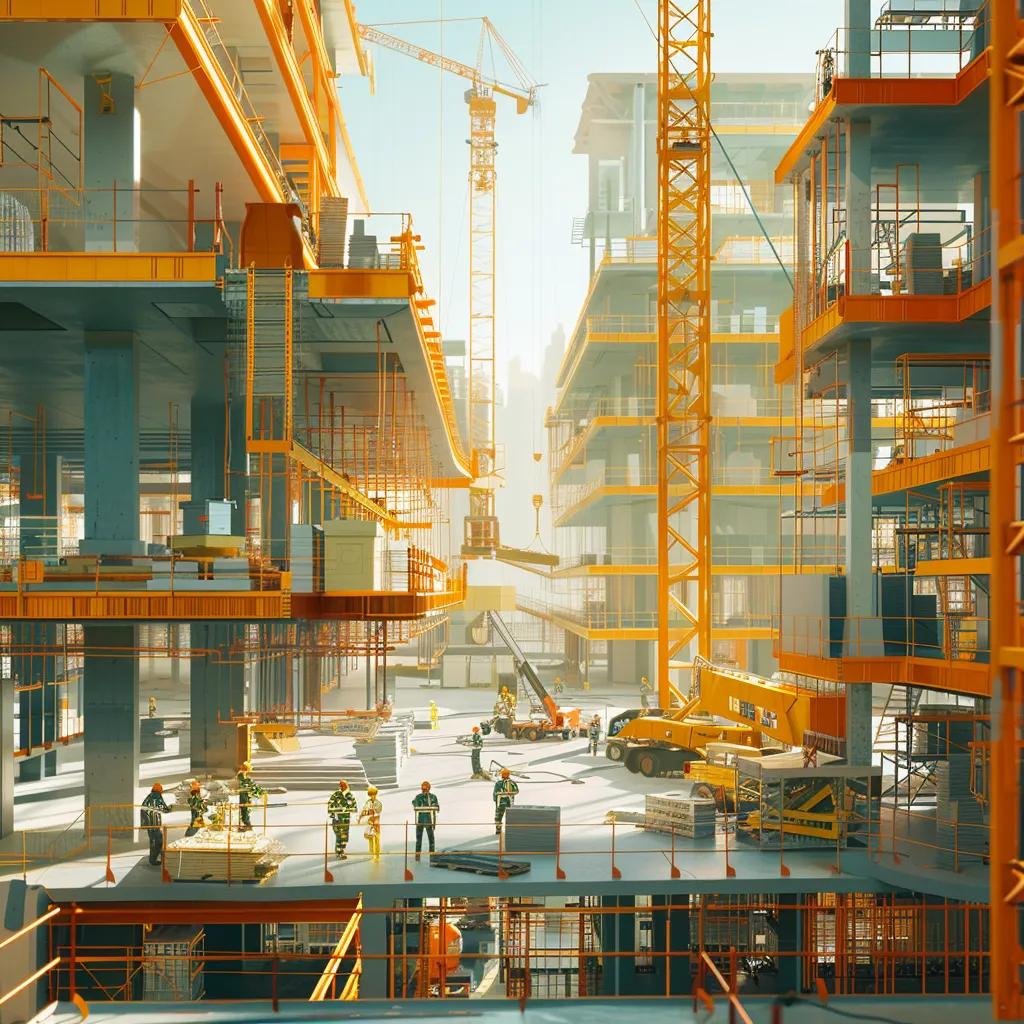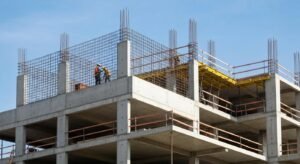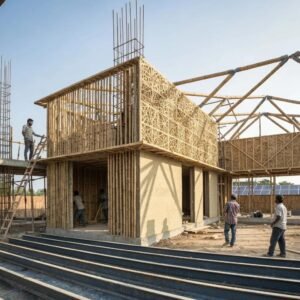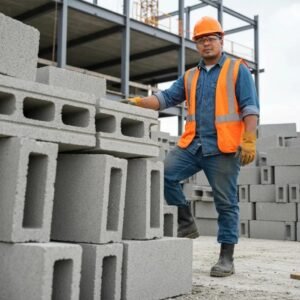Optimizing Commercial Construction for Post-COVID Resilience
The COVID-19 pandemic forced a 20% drop in global commercial construction spending in 2020 but reshaped building priorities toward health, flexibility, and resilience. Businesses now demand adaptable workspaces, robust supply chains, and advanced cleaning measures to safeguard employees and stay operational. This article examines five accelerated trends—office design, supply chain challenges, health and safety protocols, smart technologies, and sustainable design—and highlights targeted solutions like professional air duct cleaning and commercial cleaning services to future-proof post-pandemic buildings.
Impact of COVID-19 on Commercial Construction Spending
The COVID-19 pandemic significantly impacted global commercial construction spending, leading to a substantial decrease. In 2020, there was a notable 20% drop in spending, highlighting the pandemic’s disruptive effect on the industry and the need for adaptation.
This statistic provides context for the challenges faced by the commercial construction industry during the pandemic, as discussed in the article.
What Are the Major Commercial Construction Trends Accelerated by COVID-19?
Commercial construction trends accelerated by COVID-19 combine evolving workplace needs, disrupted logistics, and heightened health protocols to deliver safer, more versatile buildings.
How Has COVID-19 Changed Office Design and Workspace Layouts?
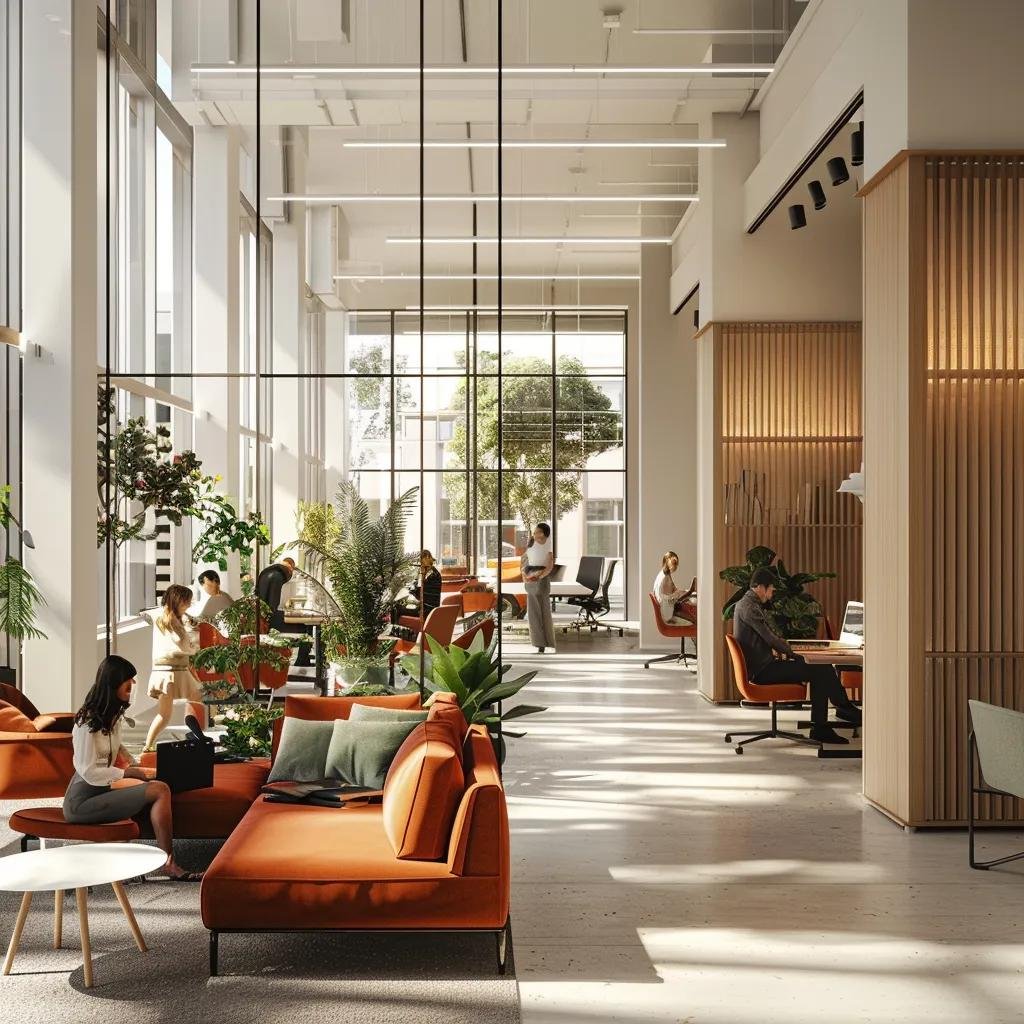
COVID-19 has driven office design toward flexible, activity-based layouts that support hybrid work and collaboration.
- Open-plan zones with movable partitions accommodate fluctuating team sizes.
- Wellness rooms and outdoor terraces promote mental health and distancing.
- Modular furniture systems enable quick reconfiguration for social-distance guidelines.
These adaptive workspaces set the stage for improved indoor air quality measures and touchless solutions.
What Supply Chain Challenges Are Affecting Commercial Construction Post-COVID?
Material shortages, labor gaps, and freight delays have stalled many projects since 2020.
- Steel and timber lead times extended to 12–16 weeks.
- Skilled labor availability dropped by 15% in key markets.
- Shipping bottlenecks increased regional cost escalations by 20%.
Supply Chain Disruptions in Construction
The construction industry faced significant supply chain challenges post-COVID-19, including material shortages and increased costs. Lead times for essential materials like steel and timber extended, and shipping bottlenecks contributed to regional cost escalations, impacting project timelines and budgets.
This citation supports the article’s claims about the specific challenges related to supply chain issues in the construction industry.
Companies now explore alternative sourcing and modular techniques to maintain project schedules and budgets.
Why Is Health and Safety Now a Top Priority in Commercial Buildings?
Health and safety protocols now underpin every build, integrating rigorous cleaning, ventilation, and monitoring systems.
- Daily surface disinfection and regular deep cleaning minimize pathogen spread.
- CO₂ and humidity sensors ensure optimal indoor air quality.
- Touchless entry and restroom fixtures reduce high-contact surfaces.
These measures create a foundation for advanced commercial cleaning and air duct maintenance solutions.
How Are Smart and Touchless Technologies Transforming Commercial Buildings?
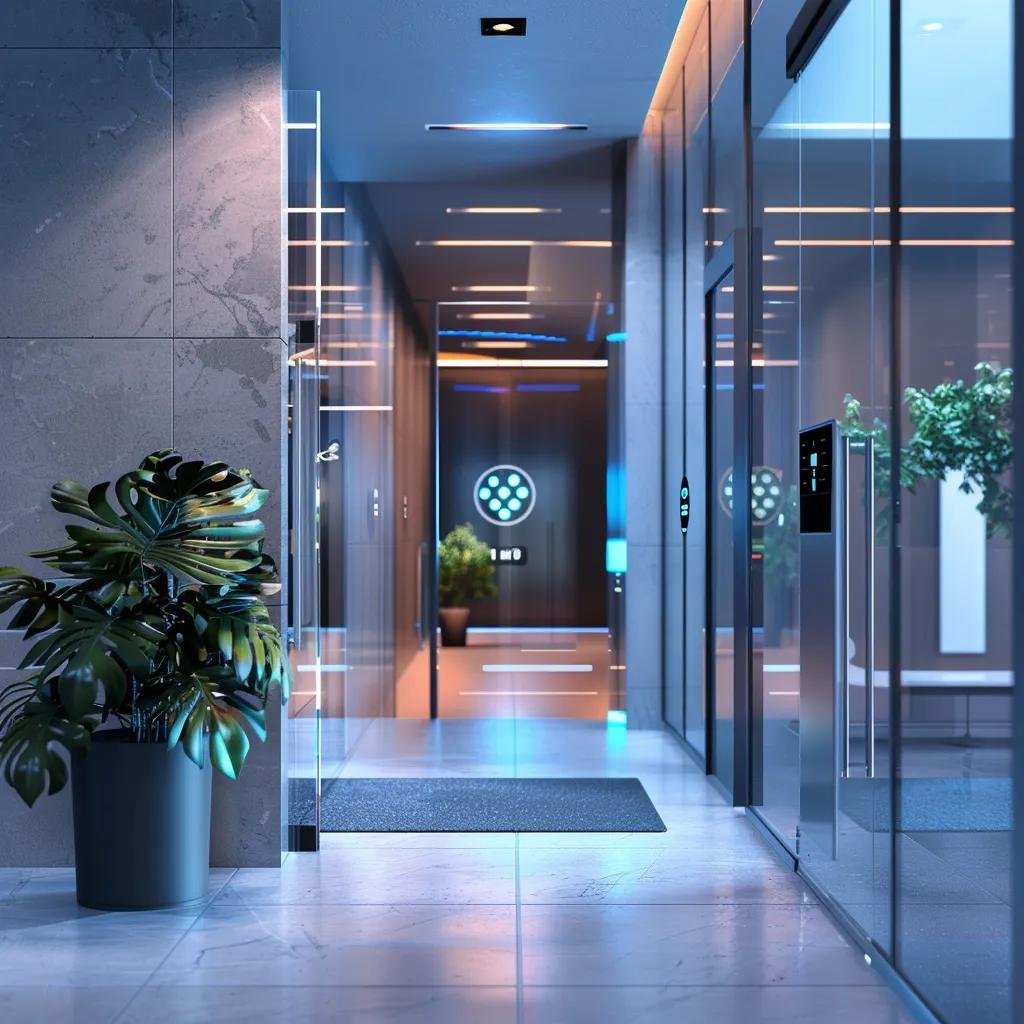
Contactless automation has become a standard feature in new builds, enhancing safety and efficiency.
- Sensor-activated doors and elevator controls eliminate common touchpoints.
- Voice-controlled lighting and HVAC adjustments respond to real-time occupancy data.
- Mobile-app building access and digital wayfinding improve traffic flow and user experience.
Integrating these systems paves the way for energy-savings and occupant wellbeing initiatives.
What Role Does Resilient and Sustainable Design Play in Post-Pandemic Construction?
Resilient design focuses on long-term durability, environmental responsibility, and adaptability to future disruptions.
- Use of recycled steel and low-carbon concrete reduces carbon footprint.
- Passive design elements—natural ventilation, daylighting—lower operational costs.
- Green roofs and rainwater harvesting enhance storm resilience and biodiversity.
Embracing sustainability also aligns with health-driven ventilation upgrades and air duct cleaning requirements.
How Has COVID-19 Impacted Office Design to Support Hybrid and Flexible Work Models?
Post-pandemic office design defines flexible, health-focused environments that facilitate in-office collaboration and remote connectivity.
What Are the Key Features of Post-Pandemic Office Layouts?
Post-pandemic layouts blend collaboration, privacy, and wellness in a single floor plate:
- Activity-Based Zones encourage teamwork with reconfigurable workstations.
- Quiet Pods offer sound-proofed workspaces for focused tasks.
- Wellness Hubs integrate spaces for physiotherapy, meditation, or short breaks.
These features drive demand for specialized cleaning protocols and HVAC optimization.
How Does Improved Indoor Air Quality Influence Office Design?
Enhanced ventilation strategies define modern office planning by directly linking IAQ to occupant health. The table below outlines key relationships:
| Element | Attribute | Benefit |
|---|---|---|
| Mechanical Ventilation | Air exchange rate | Reduces airborne pathogens |
| HEPA-filtered AHUs | Filtration efficiency | Captures 99.97% of particles |
| CO₂ monitoring systems | Real-time tracking | Prevents stagnation and drowsiness |
Improved IAQ protocols naturally connect to professional air duct cleaning services to maintain HVAC performance.
How Is Touchless Technology Integrated into Modern Office Spaces?
Touchless devices streamline user interactions and reduce germ transmission:
- Motion-sensing faucets and soap dispensers in restrooms.
- Automatic door operators and hand-free elevator controls.
- Voice-activated conference room systems and desk-booking apps.
These installations complement broader smart building strategies focused on occupant comfort and efficiency.
What Are the Effects of COVID-19 on Commercial Construction Supply Chains?
COVID-19 exposed vulnerabilities in global logistics, prompting a shift toward agility and local sourcing.
How Do Material Shortages and Labor Gaps Delay Construction Projects?
Delayed deliveries and workforce limitations directly extend project timelines:
- Attribute: Lead times | Value: Up to 16 weeks for steel orders.
- Attribute: Skilled labor shortage | Value: 10–15% fewer qualified tradespeople.
- Attribute: Freight costs | Value: Up 30% due to shipping constraints.
These constraints highlight the value of modular construction and offsite manufacturing.
How Does Modular Construction Help Mitigate Supply Chain Issues?
Modular techniques accelerate schedules by shifting fabrication to controlled factory settings:
- Pre-engineered components reduce on-site labor demands.
- Standardized modules buffer against regional material delays.
- Just-in-time delivery minimizes storage costs and on-site clutter.
Integrating modular design lowers exposure to volatile commodity markets and labor swings.
What Strategies Are Businesses Using to Navigate Cost Escalations?
Companies adopt diversified procurement and cost-control measures:
- Bulk purchasing agreements secure fixed material prices.
- Local supplier partnerships reduce shipping lead times and carbon footprints.
- Value engineering optimizes design without sacrificing functionality.
These tactics form a blueprint for resilient project planning and budget management.
Why Are Health and Safety Protocols Critical in Post-COVID Commercial Buildings?
Rigorous health and safety protocols protect occupants and uphold business continuity by minimizing disease transmission.
How Do Commercial Cleaning Services Enhance Workplace Hygiene?
Professional commercial cleaning delivers systematic disinfection across high-touch areas:
- EPA-registered disinfectants applied on schedules matching building use.
- Electrostatic sprayers ensure uniform coverage in large spaces.
- Trained technicians follow ANSI/AHSRAE guidelines for infection control.
Adding these services establishes trust in workspace safety and prepares properties for occupancy.
What Benefits Does Commercial Air Duct Cleaning Provide for Indoor Air Quality?
Air duct cleaning removes dust, mold, and allergens that degrade HVAC performance:
- Improves air flow by up to 25%, reducing energy costs.
- Eliminates accumulated microbial growth that can trigger respiratory issues.
- Extends equipment lifespan through preventive maintenance.
Benefits of Commercial Air Duct Cleaning
Air duct cleaning offers several advantages for indoor air quality and HVAC performance. It can improve airflow, reduce energy costs, and eliminate accumulated microbial growth, contributing to healthier indoor environments and aligning with post-pandemic building standards.
This citation supports the article’s claims about the benefits of air duct cleaning in commercial buildings.
These outcomes support healthier indoor environments and align with post-pandemic building standards.
How Do Ventilation Systems Support Occupant Wellbeing?
Optimized ventilation ensures continuous fresh-air delivery and thermal comfort:
- Variable-speed fans adjust airflow based on occupancy sensors.
- Demand-control ventilation maintains CO₂ levels below 800 ppm.
- Integrated air quality monitors automate system responses.
Enhanced airflow strategies complement both cleaning services and digital IAQ dashboards.
How Are Smart and Resilient Building Technologies Shaping Commercial Construction?
Next-generation buildings pair automation with robust design to adapt to evolving health and environmental demands.
What Are the Advantages of Touchless Technology in Commercial Spaces?
Touchless solutions reduce germ transmission and streamline operations:
- Automatic entries and sensor-based lighting eliminate high-contact fixtures.
- Mobile credentials and facial recognition secure access without keycards.
- Digital kiosks and wayfinding apps guide visitors safely through facilities.
These systems integrate seamlessly into broader building management platforms.
How Does Resilient Design Address Climate and Future Disruptions?
Resilient design embeds redundancy and protective measures against extreme events:
- Reinforced structural elements mitigate seismic and wind damage.
- Passive solar shading and thermal mass smooth temperature fluctuations.
- On-site renewable power and storage ensure critical functionality during outages.
This robust approach aligns with sustainability goals and long-term operational resilience.
How Do Smart Buildings Improve Energy Efficiency and Occupant Experience?
Smart building platforms unify data, control, and analytics for optimal performance:
- Automated HVAC scheduling reduces energy use by 20% during low-occupancy periods.
- Integrated lighting and shading systems respond to daylight and occupancy.
- Occupant engagement apps allow individual control over micro-climates.
These enhancements support both environmental targets and tenant satisfaction.
How Can Businesses Leverage Digital Marketing to Adapt to Post-COVID Construction Trends?
Digital marketing enables commercial services to connect with decision-makers seeking post-pandemic solutions.
Why Is Local Lead Generation Essential for Air Duct and Commercial Cleaning Services?
Local SEO and targeted ads capture businesses ready to invest in health-driven maintenance:
- Geotargeted campaigns ensure visibility in service areas.
- Reputation management and reviews build trust among facility managers.
- Landing pages optimized for “commercial air duct cleaning near me” drive qualified inquiries.
Mastodon Marketing specializes in generating these leads for cleaning and HVAC providers.
How Does Semantic SEO Help Commercial Construction Businesses Rank for New Trends?
Semantic SEO aligns content with evolving search patterns around post-COVID topics:
- Entity-based structuring maps “indoor air quality” to “air duct cleaning services.”
- FAQPage schema answers PAA questions on hybrid offices and ventilation.
- Topic clusters connect trend analyses to service pages, boosting topical authority.
This approach positions companies as go-to experts in emerging construction requirements.
What Are Effective Digital Marketing Strategies for Post-Pandemic Commercial Services?
A multi-channel plan drives awareness and conversions for health-focused offerings:
- Content Clusters publishing trend insights linked to service pages.
- Local Business Schema to improve map pack and rich snippet visibility.
- Email Nurture Sequences educating prospects on IAQ and safety benefits.
Combining these tactics ensures sustained lead flow for air duct cleaning and commercial sanitation.
What Are the Essential Cleaning Services for a Healthier Post-COVID Commercial Environment?
Maintaining safe buildings requires both deep disinfection and HVAC system care to comply with evolving standards.
| Service | Attribute | Value |
|---|---|---|
| Commercial Cleaning | Disinfection frequency | Daily or weekly based on occupancy levels |
| Air Duct Cleaning | Particle removal rate | Up to 95% of accumulated dust and mold |
| Ventilation Maintenance | Airflow efficiency | Improvement by 15–25% post-cleaning |
How Does Commercial Air Duct Cleaning Improve Building Health and HVAC Performance?
Targeted duct cleaning enhances system efficiency and indoor hygiene:
- Removes contaminated deposits that harbor mold and bacteria.
- Restores designed airflow rates for optimal temperature control.
- Reduces energy consumption and maintenance costs over time.
Enhanced duct cleanliness supports both occupant comfort and regulatory compliance.
Why Is Comprehensive Commercial Cleaning Vital for Workplace Safety?
Full-spectrum cleaning addresses high-touch surfaces and communal areas to prevent outbreaks:
- Hard-surface disinfection using EPA-approved agents at regular intervals.
- Technology-driven monitoring logs cleaning events for audit readiness.
- Specialty services like electrostatic spraying reach hidden crevices.
A multi-layered program reinforces trust in a space’s hygiene credentials.
How Do These Services Support Compliance with New Health and Safety Standards?
Adhering to CDC, OSHA, and ASHRAE guidelines ensures buildings meet or exceed regulations:
- Documented cleaning schedules demonstrate due diligence in audits.
- IAQ reports and duct inspection certificates provide verifiable proof of system health.
- Customized protocols adapt to evolving public health recommendations.
Such adherence protects occupant wellbeing and mitigates liability for facility owners.
Post-pandemic commercial construction demands holistic solutions that blend design innovation, supply chain resilience, and health-focused services. Integrating professional air duct cleaning and comprehensive commercial cleaning into building protocols delivers measurable improvements in indoor air quality, safety, and operational efficiency. Mastodon Marketing’s targeted digital strategies help these services reach decision-makers ready to invest in healthier, smarter, and more resilient commercial environments. Contact Mastodon Marketing to generate qualified local leads and establish your business as a leader in post-COVID building solutions.

